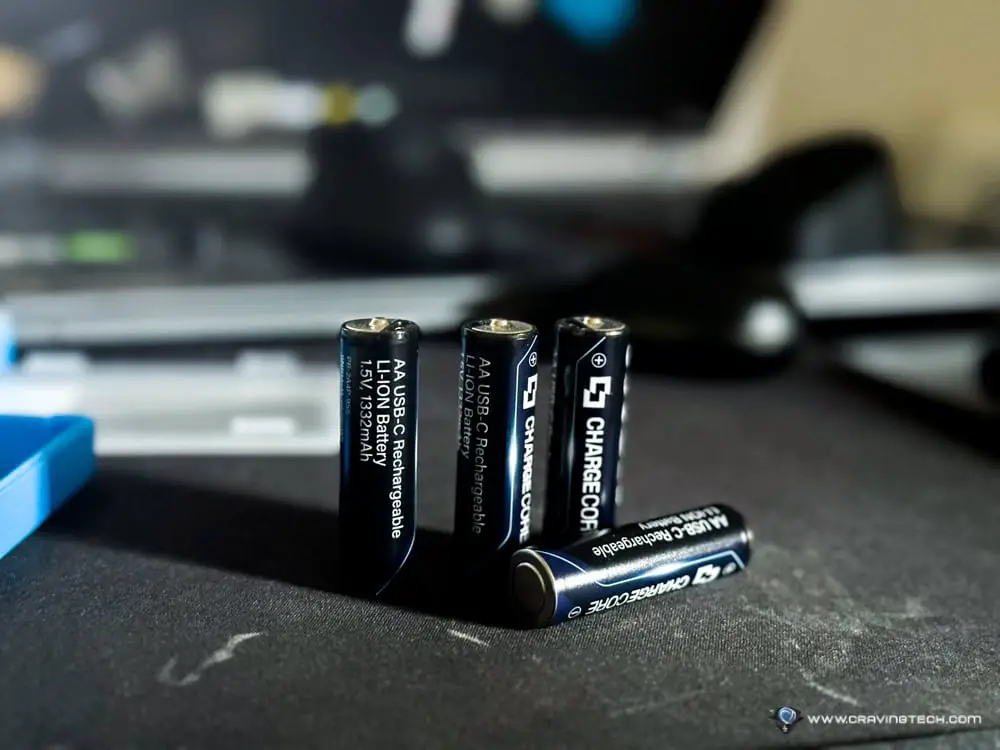Tired of the endless battery when your children’s gadgets suddenly lack juice? I was also, thanks to my 4-year-old toddler with all her toys-until I discovered USB-C rechargeable batteries. Of course, rechargeable AA and AAA batteries are not new and we have seen a lot in recent years. However, have the convenience of the USB-C load? It’s pretty nice. Very nice, in fact. Practical and simple.
Laser ChargeCore Laser ChargeCore batteries are a submarket of the confidence laser brand (we have examined some of their products here at Craving Tech). And these rechargeable AA and AAA batteries have truly revolutionized the power needs of my household, and they are not expensive too.

With rechargeable batteries, you can forget to throw single -use batteries every few months (and replace them frequently). The ChargeCore rechargeable lithium-ion design offers you up to 500 battery charging cycles. Decompos the value proposition: $ 29.95 for a pack of four, you are considering about $ 7.50 per battery. Although it may seem higher than the disposable batteries at the start, mathematics work quickly in your favor.
Consider that a typical pack of four premium alkaline batteries costs around $ 11, and you will have to replace them several times during the lifespan of a single charging battery. Factor in the 500 charging cycles and the cost per use becomes only hundred. In addition, you also make your share for the environment by reducing discharge waste.


Note however, I believe that these rechargeable batteries have a lower capacity (almost half) compared to traditional alkaline batteries. The AA batteries are delivered with 1332mAh while the AAA batteries are delivered with 390mAh. Depending on your use, you may need to load them more often against replacing an alkaline battery.
This is also one of the reasons why these batteries are cheaper than the paleblue that I have examined before. The laser loading capacity is lower than that of Paleblue and the load cable is also cheaper – read the following paragraph.
The packaging comes with a USB-A cable to USB-C to quickly load two batteries at the same time (why not four as a paleblue?). This will only take around 90 minutes to fully load the batteries – compared to the 4 to 8 traditional loading hours with Eneloop chargers and in the same way. Thanks to the USB-C Universal, you can also use your own cables and even load the batteries using a traveling bank.


Each battery has an individual LED indicator during loading. You will see an indicator of flashing blue light when it is still in charge and a solid blue when the battery is completely loaded. It may seem a small detail, but it’s quite practical if you charge several batteries at a time. They are well protected by protection against overcurrents, overvoltage protection and temperature regulation.
Apart from my son’s toys, I also have some computer devices such as my keyboard of vertical logitech lift ergonomic mouse. Well, these are now powered by laser loadcore batteries.


The batteries offer a stable output of 1.5 V and seem to maintain a coherent output power throughout their load cycle. I have not noticed any drop in performance when I use them on my peripherals and I have certainly noticed anything strange with the toys powered by battery.
Overall, the Laser Chargecore batteries have transformed what was once a daily problem into a transparent and environmentally friendly experience. If you are ready to abandon disposable batteries for a more smart and greener option, these batteries are really worth planning. You can catch them in Harvey Norman (AA | AAA).
Disclosure: laser loading examination samples have been provided for revision
Examination of rechargeable laser charger batteries
Summary
Laser offer offering AA and AAA li-ion batteries at an affordable price, making battery replacements one thing from the past
Pros
- Affordable
- Fast USB-C load (90 minutes)
- USB-C universal compatibility
- Coherent outing
- Individual LED load indicators
- Reduce discharge waste
Disadvantages
- The cable included can only load 2 at the same time
- A little weak in capacity
- Probably not the best solution for high power devices


